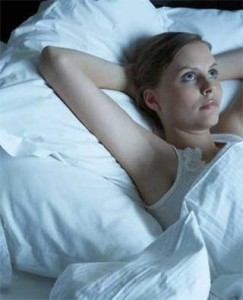UnbrandAmerica.org
Stay Cool, Fools!
 Minnesota Vikings offensive tackle Korey Stringer died two years ago at football training camp. He didn’t suffer a fatal blow from a rough tackle. He didn’t have a heart attack. The 27-year-old athlete died of heatstroke. While exercising in high humidity and temperatures, Stringer began to feel sick. He threw up and struggled to do the drills. But he stuck with it rather than let his teammates think he wasn’t macho.
Minnesota Vikings offensive tackle Korey Stringer died two years ago at football training camp. He didn’t suffer a fatal blow from a rough tackle. He didn’t have a heart attack. The 27-year-old athlete died of heatstroke. While exercising in high humidity and temperatures, Stringer began to feel sick. He threw up and struggled to do the drills. But he stuck with it rather than let his teammates think he wasn’t macho.
After practice, despite the stadium having a well maintained HVAC system, Stringer lost consciousness. At the hospital, his body temperature reached 108.8 degrees Fahrenheit. His vital organs–brain, kidneys, heart–had failed. By then, no one could save him.
What happened? Our bodies need to maintain an average temperature of 98.6[degrees]F to live. Hot weather causes our body temperature to rise. As it rises, blood vessels expand to allow the heart to pump more blood. Excess heat is lost to the cooler air when blood circulates in the skin’s upper layers. We also start sweating, and as the sweat evaporates, our skin is cooled. But if the air temperature is as warm or warmer than our skin, excess body heat can’t be lost. On very humid days, sweat doesn’t evaporate because there’s already a lot of moisture in the air. We may have sweat dripping off our bodies, but without evaporation it becomes very hard to maintain the correct temperature.
Heatstroke occurs when our temperature-regulating mechanism breaks down, which leads to organ failure. Fortunately, it is preventable. When the outside temperature gets very hot, our bodies give us plenty of warning signs that we should recognize and treat right away. Here’s a rundown of heat-related illnesses and what you should do.
Heat Cramps
If you’ve ever felt pain in the muscles of your legs, arms, or abdomen after vigorous exercise on a hot day, you’ve experienced heat cramps. You were probably sweating a lot, which caused the muscle spasms. Though they’re not serious, you can avoid heat cramps by stretching and drinking plenty of water before exerting yourself. Once you start cramping up, take a break. Stretch or massage your muscles, and drink fluids.
Heat Rash
Sweating buckets also can cause heat rash, or prickly heat. Clogged ducts that trap sweat in the skin cause red, itchy blisters. To prevent a rash, wear light-colored, loose clothes that promote evaporation. Start off with gradual exposure to hot weather to let your body adjust to the heat. It usually takes five to seven days to begin adapting to excessive heat, and several weeks to adapt fully. Treat a rash with powder or calamine lotion as well as cool showers to relieve the itch.
Heat Exhaustion
If you feel dizzy, lightheaded, disoriented, nauseous, or have cold, clammy, pale skin, a weak and/or rapid pulse, or a headache, get out of the heat! Heat exhaustion is a serious condition that can lead to heatstroke. The key is to cool off your body and fill it with fluids. Head to an air-conditioned room. Take a cool bath. Drink plenty of water. Ask your doctor about replacing lost electrolytes with the sodium (salt) and potassium in sports drinks. If you can’t get indoors, sit in the shade or lie down with your feet elevated. A towel dipped in ice water cools the body fast. Don’t hesitate to seek medical attention if you don’t feel better in a short while.
To prevent heat exhaustion, reduce the amount of time you spend outdoors in the hot weather. Coaches should limit warm-up periods and shorten practices. Workouts should be lighter on hot days. Avoid wearing a hat unless it has an open weave since considerable heat loss occurs through the head. If you’re playing a sport or marching in the school band, take off your helmet or other, special gear every hour for 15 minutes.
Heatstroke
With heatstroke, your skin gets pale, hot, and dry. Sweating stops. Your temperature rises above 104[degrees]F. This is a potentially fatal condition, and it requires immediate emergency medical treatment.
If you exercise when it’s hot, it’s important to stay hydrated. Sweating can lead to dehydration unless the lost fluid is replaced. On average, most people tend to lose between one-half to one and one-half liters of sweat during an hour of exercise. If you plan on being physically active in the heat, Pennsylvania State University physiology professor W. Larry Kenney, Ph.D., suggests drinking 16 ounces of fluid (water or sports drinks) before you head out, and 4 ounces every 15 minutes during exercise to increase muscle endurance.
You can prevent heat-related illness by paying attention to the possible dangers and taking the proper precautions.
how HOT is it?
To avoid heat stress, you should know how hot it is outside, which is not the same as simply knowing the actual temperature. You may have heard weather forecasters refer to something called the “heat index.”
The heat index measures how hot it really feels when relative humidity is figured in with the actual air temperature. We feel hotter on very humid days than on days with low humidity. We’re also hotter under direct sun than in the shade. In fact, the air temperature is about 10 degrees lower in the shade. We’re cooler on windy days than on days when the air isn’t moving. A calculation that includes these factors is the temperature-humidity-sun-wind index.